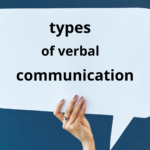Boost Your Business Communication Skills with Effective Strategies

Effective communication skills are vital for success in any business setting.
Whether you are interacting with clients, colleagues, or superiors, being able to convey your thoughts and ideas is essential.
In this article, we will explore various strategies that can help you improve your business communication skills. From active listening techniques to adapting your message to your audience, we will cover all aspects of effective communication.
By implementing these strategies, you can enhance your ability to connect with others, foster stronger relationships, and ultimately achieve greater success in your professional endeavors. So, let's dive in and discover how you can become a master communicator in the business world.
Listen
Hearing and comprehending what is being expressed is an essential part of successful discourse. Paying attention is more than just hearing a person's words; it is understanding the significance of the message.
To effectively listen, it is important to put away any distractions, such as our own inner dialogues or ingrained beliefs, and concentrate on what is being articulated.
By utilizing active listening techniques and deactivating our internal conversations, we can truly listen and grasp what others are conveying. Communication is a two-way process, and listening is a major part of that.
Being frank in our discourse is another significant element of effective listening. Openness means being honest, straightforward, and forthcoming in our conversations. It means providing information and being willing to hear different views.
When we are transparent in our conversations, we can build trust with our peers and establish an atmosphere where everyone feels at ease sharing their thoughts and ideas.
By actively listening and offering transparency, we can form a culture of open communication that encourages collaboration and invention.
Molding the message to our audience is a critical skill in proficient communication. Not every person obtains information in the same manner, so it is essential to tailor our message to the requirements and tastes of our listeners.
This implies considering elements such as their proficiency level, style of communication, and cultural background. By recognizing our audience and adjusting our message accordingly, we can guarantee that our communication is clear, concise, and meaningful. Effective discourse is not only about what we say but how we say it.
Enhancing communication aptitudes in the workplace is an ongoing procedure that incorporates numerous different parts. One of the essential components of this process is listening.
By honing active listening techniques, offering openness in our discourse, and adapting our message to our audience, we can become more proficient communicators.
Communication is a vital expertise in any business setting, and by improving our communication skills, we can improve our associations with colleagues, stimulate collaboration, and ultimately contribute to the prosperity of our organizations.
Apply Active Listening Techniques
In order to foster successful collaboration and productive relationships in the workplace, it is essential to embrace active listening techniques.
This involves fully engaging with the speaker and concentrating on their message, bypassing any internal dialogue that could distract us.
By actively listening, we demonstrate our genuine interest in what others have to say, absorb essential data, and answer suitably. Through active listening, we can enhance our business communication aptitudes and create a setting of trust and openness with transparency.
Adaptability is a key factor of active listening techniques. Every individual has their own communication style, inclinations, and comprehension level. Consequently, it is fundamental to craft our message to make sure it is relevant to the intended recipients.
This implies thinking about the language utilized, the level of detail given, and the overall tone of the communication.
By adapting our message, we can effectively convey our ideas, grab the attention of our audience, and guarantee that our message is received and comprehended.
Employing active listening strategies in this manner permits more meaningful and effective communication within the workplace.
Tailoring the message to our audience is an integral part of active listening techniques. This means being honest and providing information, articulating our thoughts and opinions, and actively looking for feedback from others.
Transparency allows for effective problem-solving and decision-making, as everyone is on the same page and has access to the required information.
By combining active listening techniques with transparency, we can amplify the quality of our communication and promote a positive work culture.
Offer Transparency
When it comes to running a successful organization, offering transparency is key. It helps to build trust and foster positive relationships with colleagues, encouraging collaboration and inclusivity. By sharing relevant information and keeping everyone in the loop, misunderstandings and rumors can be minimized.
Additionally, it demonstrates a commitment to fairness and accountability, ultimately leading to greater effectiveness within the business.
To achieve transparency in your company, it's important to create an atmosphere where employees feel comfortable expressing their thoughts and ideas. Listen actively to their feedback and address their questions or suggestions to cultivate a culture of open dialogue and continuous improvement.
This approach will likely result in increased employee engagement and satisfaction, as they feel valued and included in the decision-making process.
Another way to ensure transparency is by providing clear and timely updates on important matters. This could include sharing news from the firm, project, and initiative updates, and any changes that may affect employees or the business as a whole.
By being proactive with your communication, everyone is kept in the loop and has the information they need to perform their roles effectively. Plus, it allows staff to understand the reasoning behind decisions, thus helping to build trust and credibility.
Finally, transparency in business communication is not only about sharing information but also about being honest and sincere in your dealings. Avoid withholding or manipulating information for personal or professional gain, and instead communicate with integrity and authenticity.
This means being truthful, admitting mistakes when necessary, and taking responsibility for your actions. When you offer transparency in your business, you create an environment where trust and respect thrive, leading to stronger relationships and better business outcomes.
Adapt the Message to Your Audience
Tailoring your message to the specific needs of your crowd is essential for successful interaction. Comprehending the requirements, preferences, and manner of speaking of your audience is critical in delivering your communique in a way that resonates with them.
By adjusting your talk to the individual perspectives and expectations of your listeners, you can better understand, participate, and eventually, accomplish your verbalization efforts.
Whether you are speaking to customers, co-workers, or personnel, taking the time to modify your message to their distinct points of view enables you to connect on a deeper level and form stronger relationships.
By considering elements such as language, tone, and scope of information, you can guarantee that your message is received and comprehended by your audience, resulting in more efficient and powerful communication.
Adapting the verbalization to your audience is not only about understanding their preferences and way of speaking but also recognizing their expertise and familiarity with the subject matter. Modifying the complexity and technicality of your message can make a considerable difference in how well it is accepted and understood.
When addressing listeners who are not familiar with the topic, it is important to break down complex concepts into simpler terms and provide clear explanations.
On the other hand, when communicating with a more knowledgeable group, you can employ industry-specific terminology and offer more in-depth information.
By adapting your message to meet the needs and knowledge level of your listeners, you show respect for their time and intelligence and increase the probability of effective communication and successful outcomes.
Make Communication a Priority
Making conversation a top priority is essential to any successful business. To hone your communication abilities, you must be intentional about creating an atmosphere of open and honest dialogue.
This emphasizes the significance of others' ideas and concerns, resulting in improved collaboration and creativity. Furthermore, prioritizing communication encourages stronger relationships and trust inside the organization.
As you and your team make it a habit, communication becomes second nature, allowing you to implement more efficient and effective strategies.
To master the art of communication, it is critical to prioritize and take advantage of opportunities to converse. By doing this, you create a culture of mutual respect and appreciation, allowing for the free exchange of ideas.
By recognizing the value of other people's input, you foster trust and greater collaboration. Additionally, communication becomes ingrained in your behavior, leading to more proficient and successful methods.
Be Clear and Concise
How to be succinct and cogent? In the modern business world, successful communication is paramount. One significant factor of good communication is being succinct and cogent in your message. By using brief language and avoiding superfluous details, you can ensure that your message is comprehended by your audience.
This is particularly crucial in written communication, where meandering and complex sentences can lead to ambiguity.
By keeping your message brief, you can communicate your ideas in a straightforward manner, conserving both time and effort for yourself and your audience.
Additionally, being clear in your communication helps to avoid misunderstandings and misinterpretations, leading to more effective and efficient communication.
Another significant element of succinct and cogent communication is structuring your thoughts and ideas in an ordered manner.
By constructing your message clearly and concisely, you can help your audience follow along and understand your primary points more easily.
This can be attained by using headings, bullet points, or numbered lists to break down complex information into more comprehensible pieces.
Additionally, using precise and succinct language helps to eliminate any uncertainty or confusion that may arise from obscure or ambiguous statements.
By being succinct and cogent in your communication, you demonstrate competency and respect for your audience's time and attention.
Overall, being clear and concise in your communication is a pivotal skill that can significantly improve your business communication effectiveness.
Establish Effective Communication as Part of the Company Culture
For an organization to reach its full potential, a culture of effective communication must be established. Leaders should emphasize the importance of this value by setting an example through their words and actions.
This can involve consistent communication updates, promoting dialogue, and actively listening to employees. When communication is a shared responsibility, it strengthens the atmosphere and furthers collaboration.
To ensure employees are capable of communicating effectively, investing in communication training programs can be incredibly beneficial.
Through these programs, workers can gain the tools and skills necessary to practice active listening, resolve conflicts, and deliver concise messages.
Such investments can not only improve communication within the company but also build trust with external parties.
In addition, providing platforms and channels for communication is key.
This can include team meetings, virtual collaboration tools, and open-door policies. Such methods enable employees to voice their thoughts, share ideas, and exchange information.
When they feel their concerns are heard and appreciated, it increases their engagement and loyalty to the organization.
All in all, building an effective communication culture is essential for any organization. From providing training programs to creating channels for communication, numerous strategies can be implemented.
By doing so, a positive and productive work environment can be cultivated, leading to increased productivity, innovation, and growth.
Improving Communication Skills in the Workplace
Equipping a small business with the tools for success starts with improving communication skills in the workplace. This process necessitates active listening, tailoring the message to the audience, and transparency.
To ensure that these practices become entrenched in the company culture, it is important to prioritize and encourage effective communication from the top down.
Tuning into conversations with attentiveness and shutting off internal dialogue is a key factor in honing communication skills.
Doing so facilitates better comprehension of others' perspectives and requirements, which in turn builds stronger relationships and allows for more efficient problem-solving and decision-making.
Adapting the message to the individual is also essential, as everyone has a different communication style and preference.
Being candid and open during conversations helps to create trust and reliability. When employees sense that their leaders are forthright, they will be more likely to feel appreciated and motivated, enhancing communication within the small business.
Ultimately, improving verbal and written communication abilities at the workplace requires active listening, audience adaptation, and transparency, to establish effective communication as part of the company culture.
By focusing on these facets, a small business can reach its full potential through improved collaboration and productivity.
Leave a Reply




Related Posts